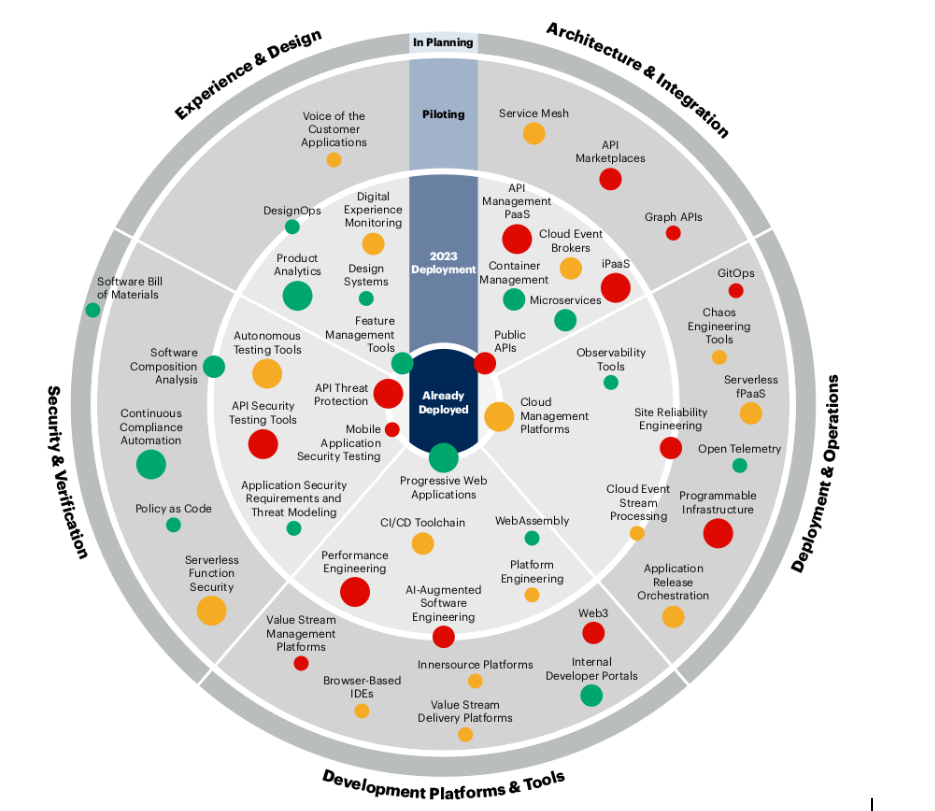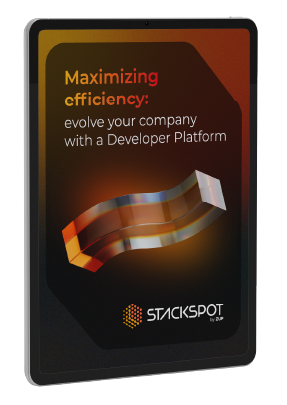Being aware of and responsive to changing customer demands is critical to business success. One, if not the most important, way to address this dynamic is to deliver software efficiently. And quickly. This level of success is only achievable by choosing a developer platform that’s right for your company.
As a result, responding to change and delivering software efficiently can result in a 4 to 5 times increase in revenue compared to companies that still need to address the relationship between change and delivery in any way.
The problem lies in the fact that while managing all the dynamics that the business demands, the architecture required for systems to deliver products satisfactorily becomes increasingly complex, and with it, the inevitable need to deal with dozens, if not hundreds, of tools, infrastructures, programming languages, frameworks, and more.
Dealing with all these dependencies increases friction and cognitive overload and negatively impacts software delivery performance, as measured by the Developer Velocity Index (DVI).
What is the Developer Velocity Index (DVI)?
Developer Velocity is the ability to drive transformational business performance through software development. In other words, it measures how quickly developers can go from idea to production.
A good Developer Velocity Index (DVI) is achieved by empowering developers, creating the right innovative environment, and removing friction points.
It is precisely to address the elements that slow speed, create friction, and increase overhead and complexity that developer platform tools have emerged.
For the DevOps / SRE movement, talking about automation and self-service is nothing new. Perhaps the paradigm shift is to treat the entire infrastructure and architectural ecosystem with the product vision. Developer platforms came precisely to abstract all the complexity at a higher level, building golden paths or, as I like to think, a one-stop shop to accompany the developer from idea to production.
What is a Developer Platform?
Another way to synthesize what IDPs are can be found on the portal Internal Developer Platform:
“An IDP consists of many different technologies and tools, pieced together to reduce the cognitive load on developers without abstracting the underlying context and technologies. Following best practices, platform teams treat their platform as a product and build it based on user research, maintain and continuously improve it.”
Consume innovation, begin transformation
Subscribe to our newsletter to stay updated on the latest best practices for leveraging technology to drive business impact
Choosing a Developer Platform: what to consider
There are several ways to accelerate the adoption process, and the good news is that if you still need to deploy or are in the early stages of deploying an internal developer platform, a 2023 survey on technology adoption by Gartner suggests that you are not alone.
The structure of the document is already interesting. There are more than 50 topics to consider, divided into five areas:
- Experience & Design
- Architecture & Integration
- Security & Verification
- Development Platforms & Tools
- Deployment & Operation

Regardless of the manufacturer, an IDP usually has three primary characteristics
Abstraction: abstract the underlying complexity across multiple technology layers, data, applications, open source libraries, programming language and scaffolding frameworks, infrastructure, and APIs.
Developer-centric view: give developers visibility of the complete software development lifecycle from conception to operations.
Pluggable framework: enables portal extension, either through plug-ins or APIs, and empowers developers to customize the outlet for their needs.
Other points in choosing a developer platform
Focus on the user
The user must always be the focal point here. The construction must be collaborative and solve the real problems of its users. Building the best platform is only possible if it solves the right situations.
Onboarding
Onboarding a new team member is time and energy-consuming. While it can be a moment of low productivity and frustration, an IDP should provide a one-stop shop with all the documentation, templates, and scaffolds for faster and more efficient onboarding.
Self-service
The entire chain that maintains the Software Development Life Cycle (SDLC) should be available for use at a high level of abstraction.
Be easy to use
A platform that is easy to use, aesthetically pleasing, and has a great experience will help its adoption.
Capabilities by default
If the platform already abstracts security guardrails, compliance requirements, observability, FinOps, and performance upfront, users don’t need to worry about these areas and stay focused on the business.
Conclusion
Being agile in deliveries and being prepared to respond quickly to changes are increasingly strategic actions in the business, and using IDPs to maximize developers’ performance to meet this goal can be an accelerating factor. Equally important is to identify the essential characteristics that the platform needs to have to deliver value to the daily lives of its users.
Choosing a developer platform has challenges, but your software development process will reach new heights with the right tools and good processes!
What other factors do you look at when choosing a developer platform? Let us know in the comments!
Source
- Developer Velocity: How software excellence fuels business performance | McKinsey
- Gartner Survey Finds the Need to Improve Developer Experience is Driving Software Engineering Technology Adoption
- Innovation Insight for Internal Developer Portals | Whitepaper Series
- The Developer Velocity Index: Increasing Software Development Excellence and Driving Business Growth | by İlyas Özkurt | Beyn Technology | Medium











